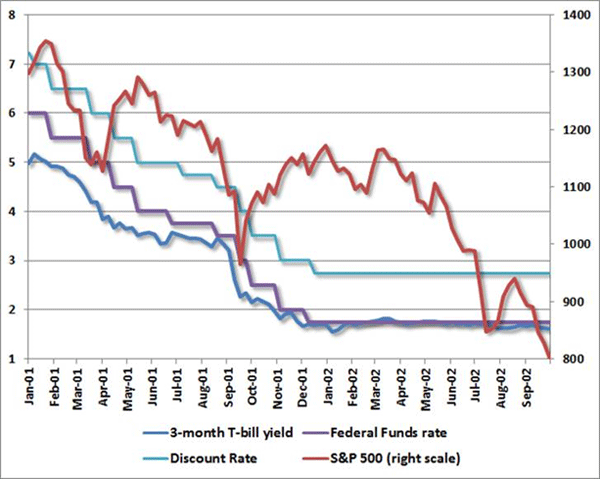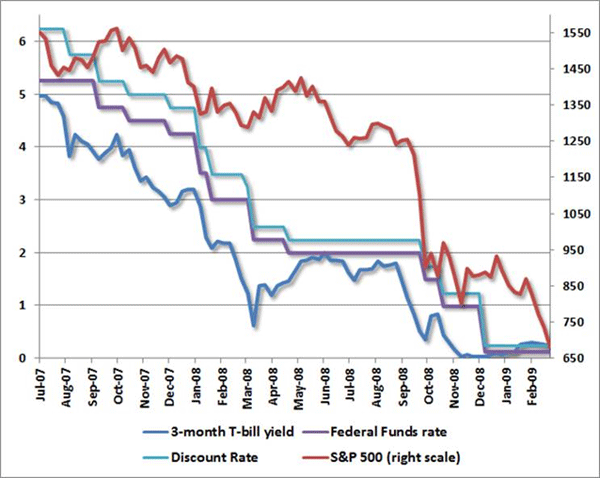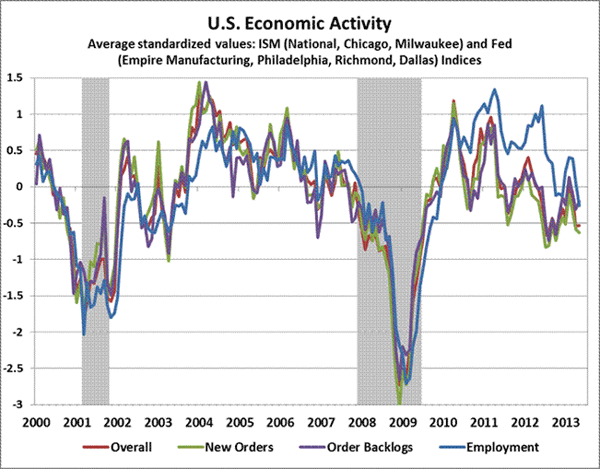The Economic Sense in Game of Thrones

[Editor's Note: This article is spoiler-free.]
Martin’s story touches on a variety of economic issues, from the implications of not having an economic system at all, to the problems of money and public finance. In another article (and in an interview), we have discussed these latter problems, and explained how the rulers of the continent of Westeros resort to the traditional methods of public finance: taxation, borrowing, and inflation.
The Political and Economic Means
In this article we will be discussing some of the other economic implications of the series, especially ideas about the social order and the role that peaceful cooperation, trade, and money play in the organization of society. Franz Oppenheimer famously distinguished between the “political means” and the “economic means” of organizing society. The former involves the forcible redistribution of wealth; wealth, however, is only created by those involved in the economic means of organization, which consists of peaceful production, trade, and exchange (1926, pp. 24-27).
This distinction shines through quite clearly in A Song of Ice and Fire. For instance, peoples as different as the Dothraki and the ironmen are stark examples (no pun intended) of the political means. Both societies produce little or nothing of their own, instead thriving on violence and plunder. A perfect illustration is found in the “words” (motto) of House Greyjoy, which proclaim, “We Do Not Sow.” The implication of course is that the men of the Iron Islands only reap the fruits of what others have sown.[1] The Greyjoy words are a very apt description of the state, which is a fundamentally parasitic institution depending for its survival on the plundering of a productive populace.
But the distinction between the political and economic means appears in more subtle cases as well. Even in the relatively peaceful parts of the kingdom where civil order is maintained, and exploitation is less obvious, it is clear that the interests of the rulers and ruled are different, as are the means for obtaining prosperity. Martin cuts to the heart of the matter in a conversation between Daenarys Targeryan and her companion, Ser Jorah Mormont. Daenarys believes the kingdom her family once ruled will rise up in support of her brother’s claim to the throne. She remarks that, “the common people are waiting for him. Magister Illyrio says they are sewing dragon banners and praying for Viserys to return from across the narrow sea to free them.” The reply she receives is simple, but insightful:
“The common people pray for rain, healthy children, and a summer that never ends,” Ser Jorah told her. “It is no matter to them if the high lords play their game of thrones, so long as they are left in peace.” He gave a shrug. “They never are.”
The idea that political behavior is essentially criminal plundering is common in A Song of Ice and Fire. In another passage, Davos Seaworth reflects on the career of his friend and fellow sailor, Salladhor Saan, who is “a smuggler… as well as a trader, a banker, a notorious pirate, and the self-styled Prince of the Narrow Sea.” Davos then concludes to himself, “When a pirate grows rich enough, they make him a prince.” [2]
Money and Society
In addition to discussing the essence of government, the series contains other economic ideas as well. One prominent example is the narrative’s strong understanding of the role money plays in society. In particular, the unfolding story provides snapshots of different stages of economic development, and these are closely tied to different cultures’ perceptions of economic activity and money.
Obvious examples are the Dothraki horselords, the decentralized group of warring tribes who roam the eastern continent. The Dothraki do not trade at all, and the closest they come to peaceful social interaction is a somewhat vague system of gift exchange. They therefore use no money, and their civilization thoroughly reflects this fact.
Without a system of indirect exchange, they are unable to develop capital goods, relying instead on the redistributive gains from conquest in order to survive. They are largely nomadic, lacking the ability (or desire) to produce or trade. In fact, the only permanent structures in the city of Vaes Dothrak are constructed by foreign slaves, using plundered materials. The lack of a complex society can be attributed to their refusal to engage in economic activity and consequently to adopt a medium of exchange. Since money makes possible the entrepreneurial decisions needed for economic development, economic calculation is therefore just as impossible for the Dothraki as it is for a socialist society.
A second phase of economic development is represented by the “wildlings” who live beyond the Wall, to the north of the Seven Kingdoms. They have no centralized political authority, and proudly refer to themselves as the “free folk.”[3]While not as developed as the economy of the Seven Kingdoms, and also without money, the wildlings are more advanced than the Dothraki. Economic activity does exist, in the form of barter relations between some relatively peaceful groups. Nevertheless, due to constant war with the peoples south of the Wall, the free folk cannot engage in sustained commerce, long-term planning, or social cooperation. Forcibly ostracized from society, they are restricted to eking out an existence in a resource-poor environment, achieving no more than the bare minimum of economic development.
Thirdly, the ironmen, such as the Greyjoys, are a more intermediate case as far as money is concerned. Their obsession with conquest leads them to downplay commerce and the use of money, which they deride as “paying the gold price.” Within their culture, men must instead pay the “iron price” for any finery they wear or luxuries they enjoy; in other words, anything of worth that one owns must be taken from the body of a slain enemy. Despite having been partially integrated, by force, into the economic and social life of the Seven Kingdoms, the ironmen make a conscious effort to maintain their ancient way of life based on expropriation. Consequently, they restrict their use of money to a relatively narrow sphere.
A higher level of economic sophistication can be found in the Seven Kingdoms of Westeros. The politics of the Seven Kingdoms are similar to those of a feudal society, where “men became rich by war and conquest and through the largess of the sovereign ruler. Men became poor if they were defeated in battle or if they fell from the monarch’s good graces” (Mises, 2006, pp. 158). Whether you have read the books or not, the story is a familiar one. Facing the difficulty of financing a seemingly-endless war, the Master of Coin (a position equivalent to a finance minister) invents new taxes; but these last only so long as the population is able to pay. The rulers are painfully aware that “half the lords in the realm could not tell taxation from tyranny and would bolt to the nearest usurper in a heartbeat if it would save them a clipped copper.” Borrowing also serves the crown. Yet, although it gives the illusion of providing a free lunch, it is nevertheless costly and does not offer lasting solutions. At one point in the story, Cersei Lannister dreams of founding her own bank as a permanent source of funds. The last resort then is to create money, which Lord Littlefinger does through the (historically common) practice of coin-clipping.
Although not as militaristic as the ironmen, the frequent wars between the ruling families of Westeros periodically destroy the accumulated wealth of the “small folk,” as the nobles call them. Due to the near-constant strife, many people in the Seven Kingdoms struggle to live from one day to the next. Saving, for example, is almost impossible for the common folk, and even knights and noblemen have a difficult time setting anything aside. It is not surprising then that the economy does not generally develop beyond the early stages of capital accumulation, and appears to have been stuck at the same level of development for thousands of years. The industries that do seem to thrive, and feature the most technological development, are the war industries, to the detriment of peaceful and productive enterprise. The armorers and boat builders, for example, are clearly described as profiteers benefitting from the political turmoil.
Given the centralization of rule in the Seven Kingdoms, and the complex network of rent-seeking and power-brokering relations that comes along with it, it is no surprise that blatant examples of wasteful government spending are common. Robert Baratheon’s tourney requires a total of “ninety thousand gold pieces” in prizes alone. Additionally, because Robert wants a “prodigious feast,” the Master of Coin pays, among others, “cooks, carpenters, serving girls, singers, jugglers, [and] fools.” The Council is quick to argue—leaning toward the broken window fallacy—that “the realm prospers” from such events, and that the lavish spending for tourneys also brings “the great the chance of glory, and the lowly a respite from their woes.” The same reasoning is used to justify other outrageous expenses, such as King Joffrey’s extravagant wedding.
The most developed economies in A Song of Ice and Fire are found in the so-called Free Cities. The nine city-states across the Narrow Sea boast “a score of temples and towers and palaces,” twice as large as those found in Westeros, and are well known for their trade in tapestry, carpets, lace, wines, and spices. Cosmopolitan and polyglot, the Free Cities have very profitable money-lending sectors as well: “Each of the Nine Free Cities had its bank, and some had more than one, fighting over every coin like dogs over a bone.” The banks provide financial aid to outsiders, especially the noble families of the Seven Kingdoms, and their reputation makes them a key player in the game of thrones: “when princes failed to repay the Iron Bank, new princes sprang up from nowhere and took their thrones.”
The Free Cities are no strangers to political struggle, obtaining what freedom they have at great cost. Braavos, now the youngest and most powerful city, was founded by refugee slaves, who have since striven to eliminate slavery elsewhere in the Free Cities.
Others have learned harsh economic lessons as well. Volantis was the oldest and largest of the Free Cities, but lost its wealth in a vain attempt to conquer the others. Volantene rulers “favored the sword, while the merchants and moneylenders advocated trade. […] After a century of war, Volantis found herself broken, bankrupt, and depopulated.” Only after renouncing its military aspirations and renewing peaceful commercial activity did it return to prosperity.
To conclude, it is worth pointing out that A Song of Ice and Fire is itself based largely on medieval history, which saw more than its share of warfare and economic destruction. Whether history or fantasy, the game of thrones (the use of the political means) prevents the spread of sound economic ideas, and precludes good economic policies. Thanks to the Seven Kingdoms, and their addiction to the game of thrones, when it comes to the peace and prosperity of Westeros, the only thing we can be sure of is that Winter is Coming.
Matt McCaffrey is an Instructor of Economics at Auburn University, and editor of Libertarian Papers. Send him mail.
See Matt McCaffrey's article archives.
There has been a good deal of buzz in the past few weeks about the premiere of the third season of HBO’s hit series “Game of Thrones.” But for those who have found the show to be too enthralling, never fear, the economists have arrived to ruin the entertainment by turning it into a learning experience.



 When it became clear at Tuesday's event that the promulgation of lies was falling on deaf ears, one AMAC speaker resorted to shaming the audience for their alleged rudeness and intolerance. In the crowd's defense, the passionate response was one of righteous anger against a doctrine that increasingly threatens Western civilization and values in the wake of the Boston bombings and the murder and beheading of British soldier Lee Rigby. That indignation was also a response to the hypocrisy of a program designed to falsely portray Muslims as victims of prejudice in dire need of special civil rights protection from hate crimes. No mention was made of jihadist acts, honor killings, demands for special accommodations, and the Muslim disinclination to assimilate to American cultural norms.
When it became clear at Tuesday's event that the promulgation of lies was falling on deaf ears, one AMAC speaker resorted to shaming the audience for their alleged rudeness and intolerance. In the crowd's defense, the passionate response was one of righteous anger against a doctrine that increasingly threatens Western civilization and values in the wake of the Boston bombings and the murder and beheading of British soldier Lee Rigby. That indignation was also a response to the hypocrisy of a program designed to falsely portray Muslims as victims of prejudice in dire need of special civil rights protection from hate crimes. No mention was made of jihadist acts, honor killings, demands for special accommodations, and the Muslim disinclination to assimilate to American cultural norms. DOJ attorney Bill Killian addressed the crowd by reading statutes verbatim from PowerPoint slides that defined hate crimes, civil rights violations, and federally prescribed violations and penalties. Prior to the event, he had released this statement: "This is an educational effort with civil rights laws as they play into freedom of religion and exercising freedom of religion.... This is also to inform the public what federal laws are in effect and what the consequences are." However, the DOJ and FBI have not scheduled meetings addressing the concerns of any other group but Muslims. Twelve such outreach sessions are planned for Tennessee alone.
DOJ attorney Bill Killian addressed the crowd by reading statutes verbatim from PowerPoint slides that defined hate crimes, civil rights violations, and federally prescribed violations and penalties. Prior to the event, he had released this statement: "This is an educational effort with civil rights laws as they play into freedom of religion and exercising freedom of religion.... This is also to inform the public what federal laws are in effect and what the consequences are." However, the DOJ and FBI have not scheduled meetings addressing the concerns of any other group but Muslims. Twelve such outreach sessions are planned for Tennessee alone.

